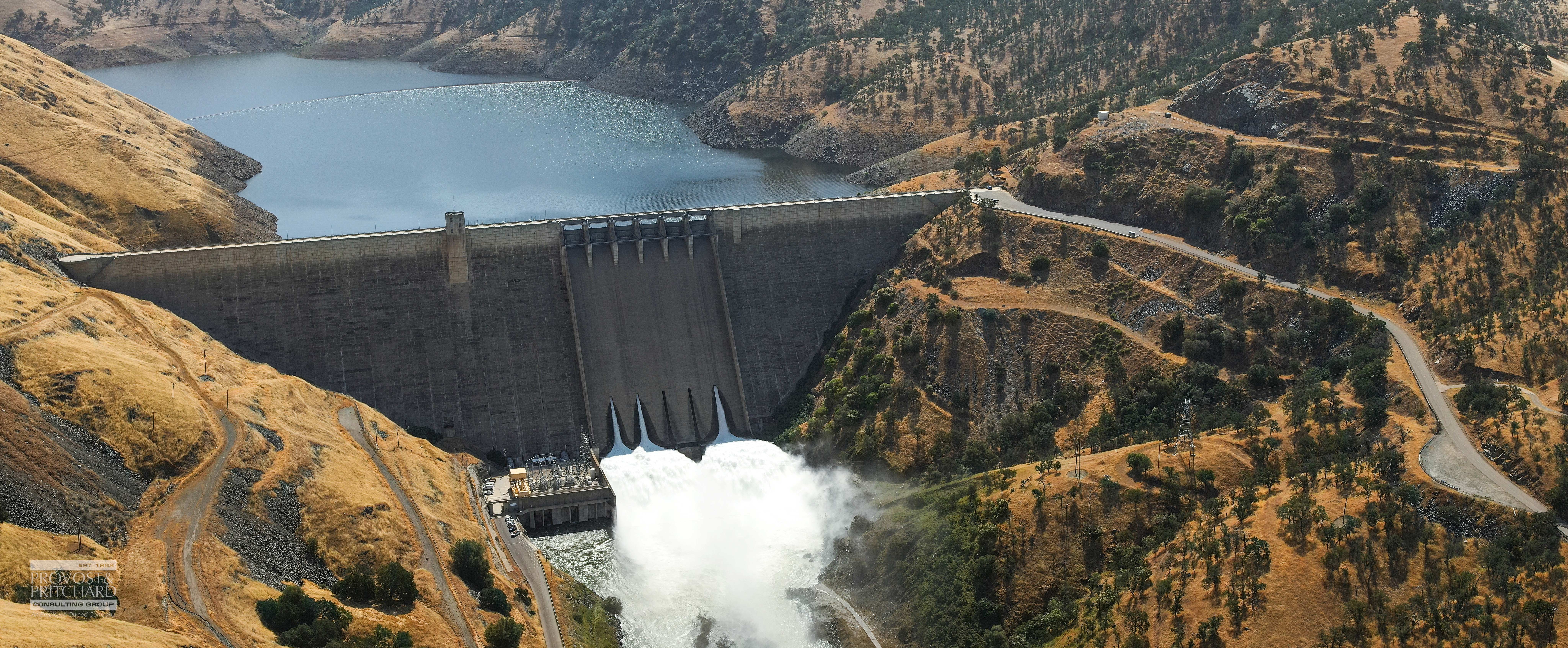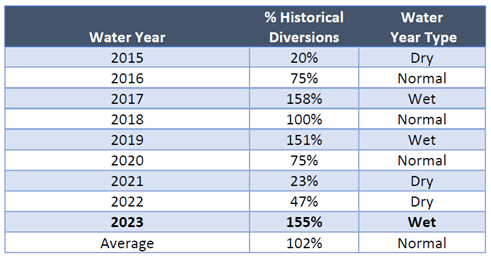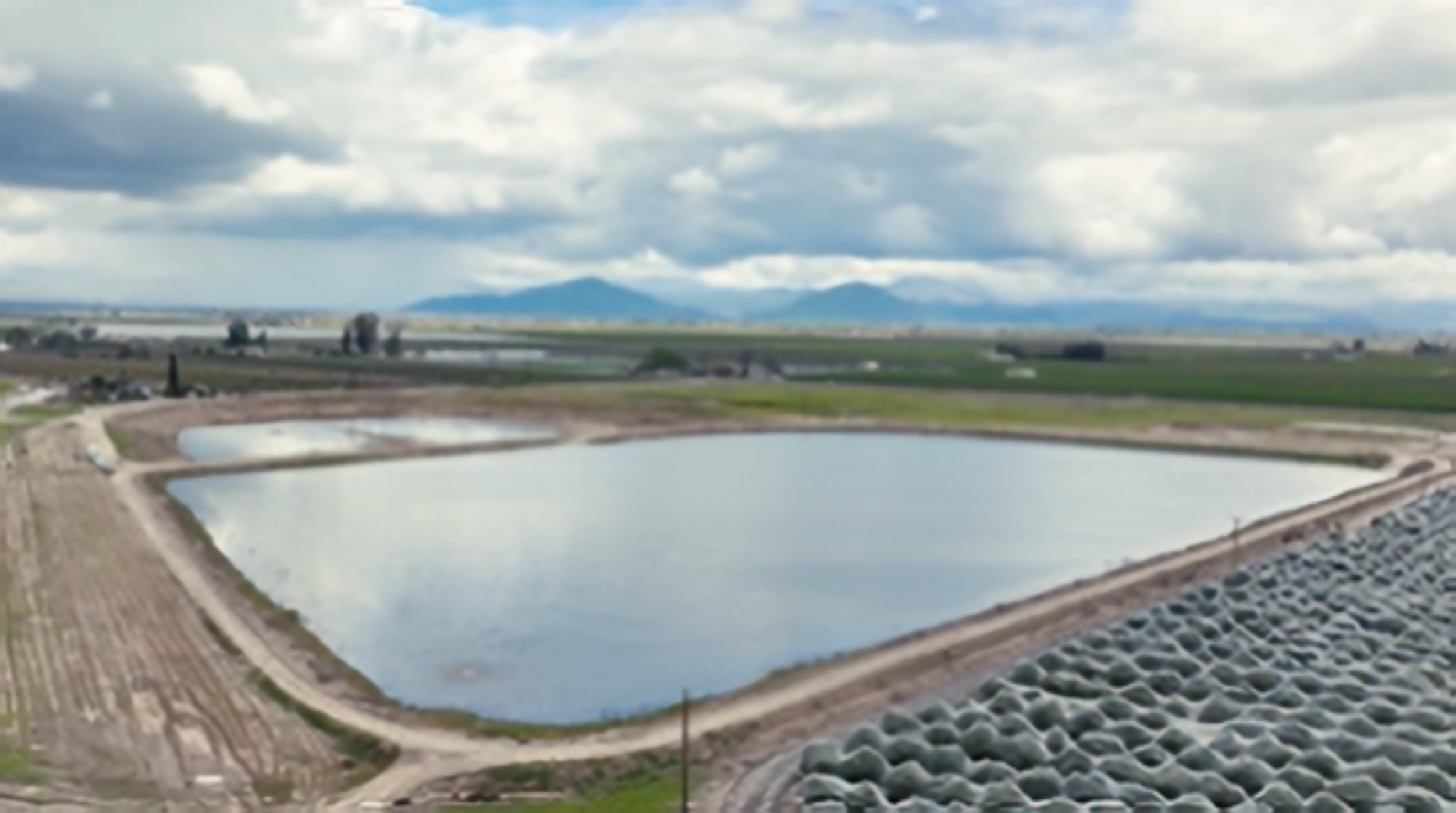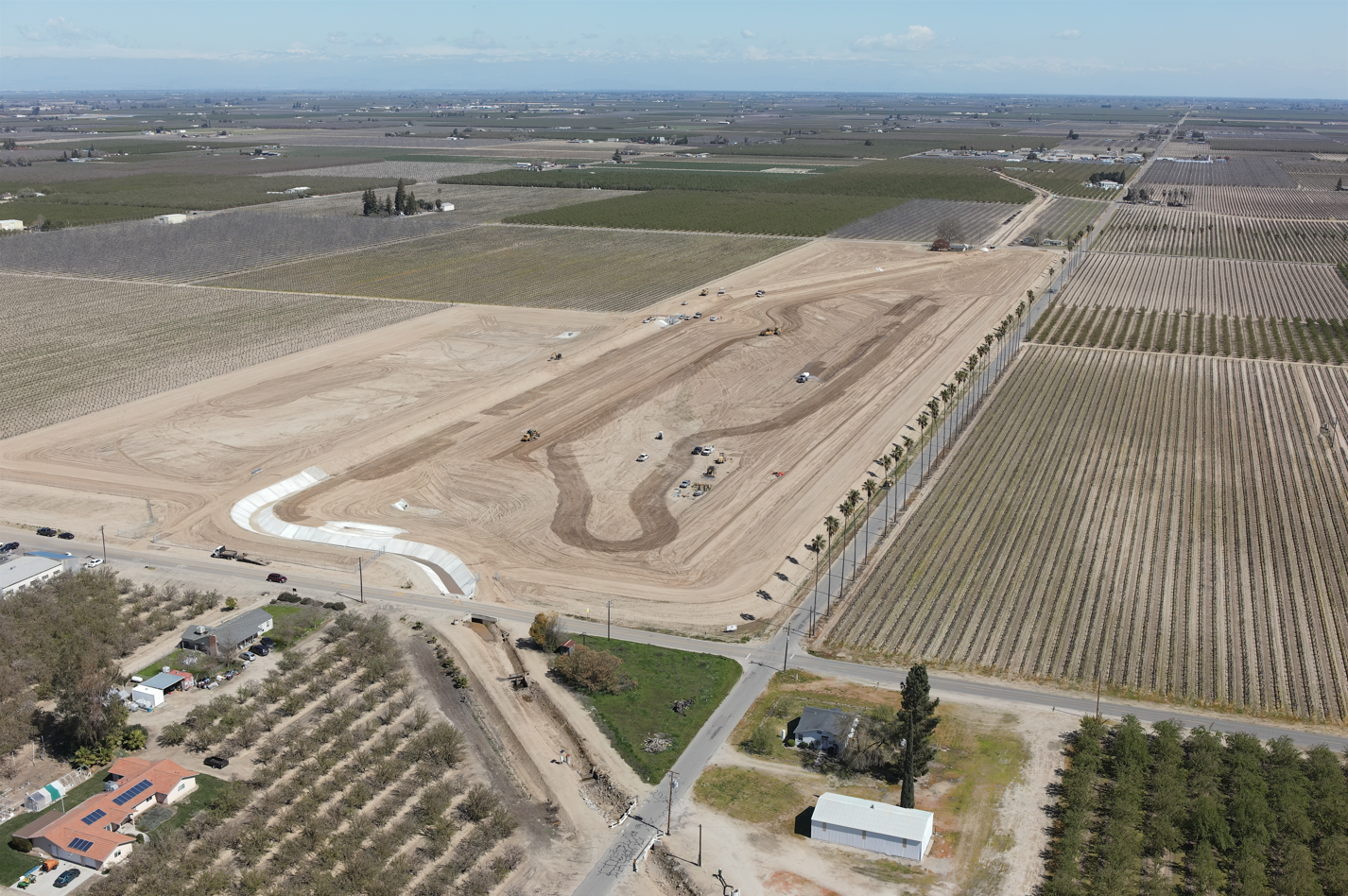Data proves the 2023 Water Year was a win, but the Kings Subbasin stays focused on the hard work ahead to meet groundwater milestones

The latest Annual Report data casts a promising light on the Kings Subbasin’s sustainability progress. Following a blitz of repeated storms resulting in the most historic snowpack the Kings River watershed has seen on record, the abundant surface water supply drove down groundwater use 56% compared to the previous water year, and down 63% compared to Water Year 2021.
Nearly 2 million acre-feet of surface water was used across the region, a quarter of which was sunk back into the underground aquifer by Kings Subbasin agencies through direct recharge efforts.
Thanks to the reduction in groundwater use and 500,000 acre-feet of groundwater recharge, the aquifer in the Kings Subbasin is estimated to have recovered 1.28 million acre-feet of groundwater storage.
“We needed the 2023 Water Year after three dry years. It helped us begin to dig ourselves out of the hole. Our groundwater storage loss was starting to add up,” stated Kassy Chauhan, North Kings Groundwater Sustainability Agency (GSA) Executive Director.

Kings Subbasin Water Year Type (2015-2023)
Kings Subbasin Annual Report Table 2-1

The recharge volumes can in major part be credited to agencies in the Kings Subbasin who put down pavement on the road toward sustainability through new project construction when the SGMA clock started in 2020, the year Groundwater Sustainability Plans (GSPs) were first submitted to the State marking the start of SGMA implementation.
Since 2020, 26 new recharge basin projects have been built on over 1,050 acres of land adding 25,500 acre-feet of new recharge capacity to park and sink surplus surface water.
“Water managers in the Kings Subbasin made things happen while the opportunity presented itself,” reflected Phil Desatoff, Central Kings GSA General Manager. “The Annual Report numbers show that it made a difference. In Consolidated Irrigation District we sank over 300,000 acre-feet thanks to sandy soils and favorable geology, and a high tide floats all boats. It helps the whole subbasin.”
Despite boots on the ground efforts to capitalize on nature’s bounty, the Kings Subbasin’s seven GSA managers know there is more work to be done to keep on track with 2040 sustainability targets. The recent dry years prompted high volumes of pumping to meet total water demands, and this latest wet year is not enough to make up the deficit.
While areas in the subbasin did see substantial groundwater level improvements, it is anticipated levels will continue to fluctuate over the course of SGMA implementation as hydrologic conditions continue to vacillate between dry and wet. This is planned for in the GSPs, but recovery versus overdraft over time needs to land on the trajectory toward sustainability goals.
“We need to stay ready to take advantage of any and all future recharge opportunities, in addition to deploying other management tools that will reduce reliance on groundwater if we are going to stay on track with the sustainability goals we have committed to in the GSPs,” stated Chauhan. “The commitment by individual districts to build projects and do recharge is essential. Ideally the individual water users are in the mix playing a role as well.”
Fresno Irrigation District (FID) just completed another recharge project adding nearly 50 acres to its portfolio of 900 existing acres and plans to develop another 400 acres into basins over the next several years. Even with all its planned recharge capacity, the North Kings GSA overlying FID sees the role of the individual landowner becoming increasingly important. As a member agency of the North Kings, FID is partnering to help educate growers on sustainable irrigation practices like keeping flood lines in tact to take extra surface water when available, but using drip when water is scarce.
Just to the south in the North Fork Kings GSA, growers are encouraged to take water during flood releases for on-farm recharge. The GSA has launched a well registration program on an online SGMA portal called Watermark, where landowners will be able to view and manage groundwater allocations in the future. Although not yet developed, allocations will come into play down the road to promote water use efficiency and reduce groundwater demand.

With the 2040 long view in mind, the Kings Subbasin’s nearest goal is to maintain its GSP approval from the State. The GSAs remain focused on coordination to address the CA Department of Water Resources’ (DWR) 12 corrective actions by the 2025 GSP Update.
Groundwater studies on interconnected streams and the confined aquifer will be undertaken this year as part of addressing DWR’s concerns, in addition to launching a new program focused on mitigating the impacts of groundwater level decline on domestic well owners. The latter program involves a heavy administrative lift by the GSAs to coordinate and get it off the ground and running in the coming months.
